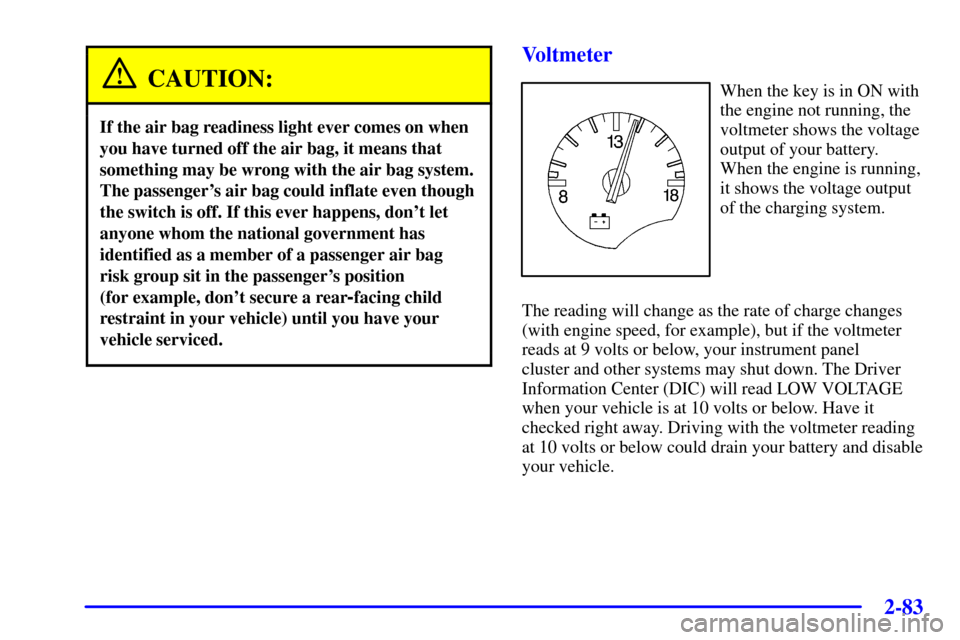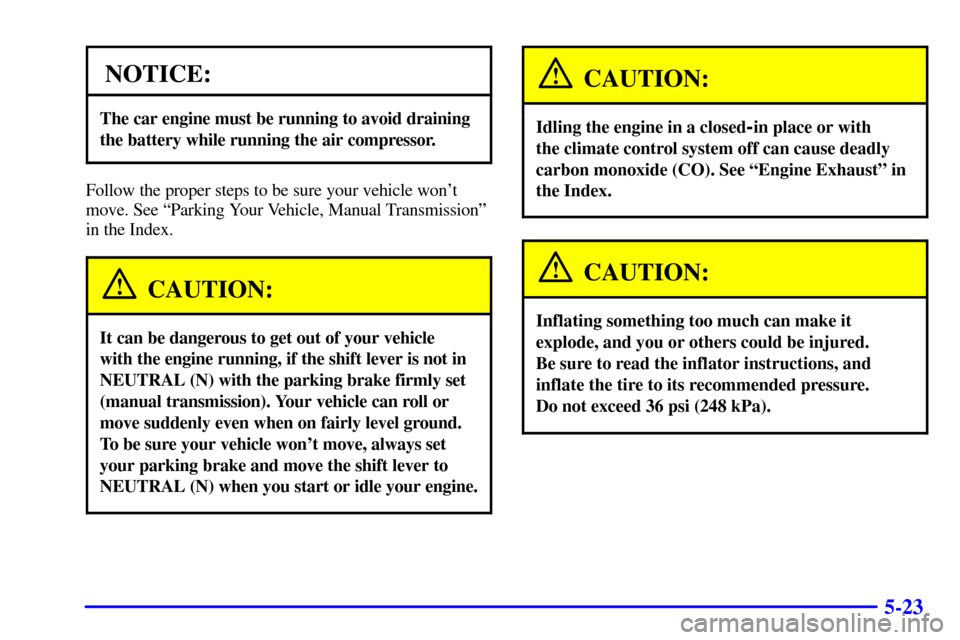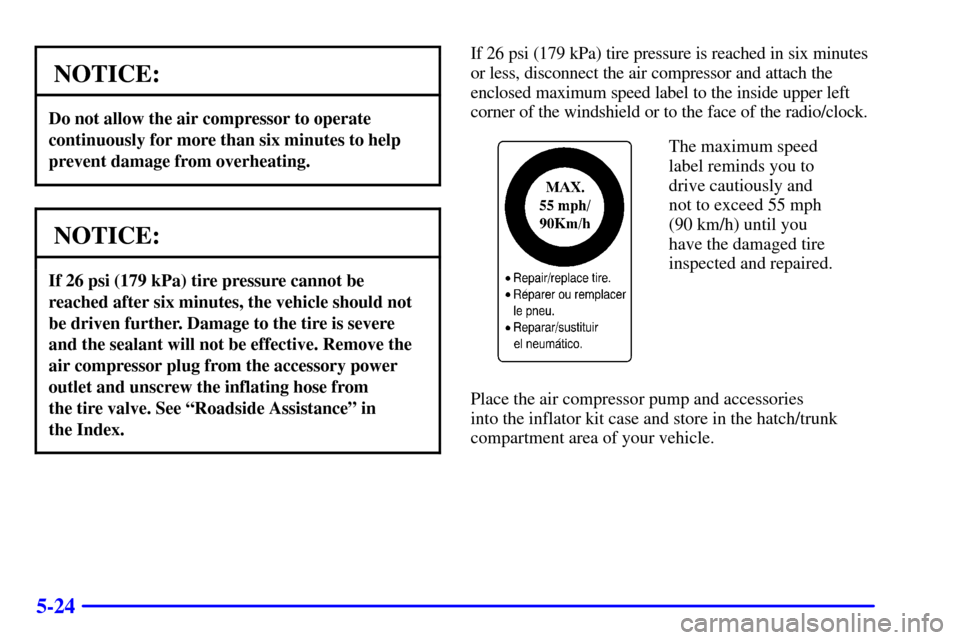Page 141 of 384

2-83
CAUTION:
If the air bag readiness light ever comes on when
you have turned off the air bag, it means that
something may be wrong with the air bag system.
The passenger's air bag could inflate even though
the switch is off. If this ever happens, don't let
anyone whom the national government has
identified as a member of a passenger air bag
risk group sit in the passenger's position
(for example, don't secure a rear
-facing child
restraint in your vehicle) until you have your
vehicle serviced.
Voltmeter
When the key is in ON with
the engine not running, the
voltmeter shows the voltage
output of your battery.
When the engine is running,
it shows the voltage output
of the charging system.
The reading will change as the rate of charge changes
(with engine speed, for example), but if the voltmeter
reads at 9 volts or below, your instrument panel
cluster and other systems may shut down. The Driver
Information Center (DIC) will read LOW VOLTAGE
when your vehicle is at 10 volts or below. Have it
checked right away. Driving with the voltmeter reading
at 10 volts or below could drain your battery and disable
your vehicle.
Page 268 of 384

5-23
NOTICE:
The car engine must be running to avoid draining
the battery while running the air compressor.
Follow the proper steps to be sure your vehicle won't
move. See ªParking Your Vehicle, Manual Transmissionº
in the Index.
CAUTION:
It can be dangerous to get out of your vehicle
with the engine running, if the shift lever is not in
NEUTRAL (N) with the parking brake firmly set
(manual transmission). Your vehicle can roll or
move suddenly even when on fairly level ground.
To be sure your vehicle won't move, always set
your parking brake and move the shift lever to
NEUTRAL (N) when you start or idle your engine.
CAUTION:
Idling the engine in a closed-in place or with
the climate control system off can cause deadly
carbon monoxide (CO). See ªEngine Exhaustº in
the Index.
CAUTION:
Inflating something too much can make it
explode, and you or others could be injured.
Be sure to read the inflator instructions, and
inflate the tire to its recommended pressure.
Do not exceed 36 psi (248 kPa).
Page 269 of 384

5-24
NOTICE:
Do not allow the air compressor to operate
continuously for more than six minutes to help
prevent damage from overheating.
NOTICE:
If 26 psi (179 kPa) tire pressure cannot be
reached after six minutes, the vehicle should not
be driven further. Damage to the tire is severe
and the sealant will not be effective. Remove the
air compressor plug from the accessory power
outlet and unscrew the inflating hose from
the tire valve. See ªRoadside Assistanceº in
the Index.
If 26 psi (179 kPa) tire pressure is reached in six minutes
or less, disconnect the air compressor and attach the
enclosed maximum speed label to the inside upper left
corner of the windshield or to the face of the radio/clock.
The maximum speed
label reminds you to
drive cautiously and
not to exceed 55 mph
(90 km/h) until you
have the damaged tire
inspected and repaired.
Place the air compressor pump and accessories
into the inflator kit case and store in the hatch/trunk
compartment area of your vehicle.
Page 270 of 384
5-25 Tire Inflator Kit Storage
The tire inflator kit is stored in the rear hatch/trunk area
of your vehicle.
A. Removable Elastic Cord
B. Rear Retaining Hook
C. Elastic Band1. Remove the elastic cord (A) from around the
retaining hook (B) and slide the kit out from under
the elastic band (C) that is secured to the floor of the
hatch/trunk area.
2. Unwrap the elastic cord (A) from around the handle
of the tire inflator kit. Open the tire inflator kit case
by lifting up the two tabs located on either side of the
kit handle.
To Stow the Tire Inflator Kit:
CAUTION:
Storing the tire inflator kit or other equipment in
the passenger compartment of the vehicle could
cause injury. In a sudden stop or collision, loose
equipment could strike someone. Store the tire
inflator kit in the proper place.
Page 271 of 384
5-26
A. Removable Elastic Cord
B. Tire Inflator Kit
1. Loop the elastic cord (A) around the handle of the
tire inflator kit.A. Removable Elastic Cord
B. Rear Retaining Hook
C. Elastic Band
2. Insert the tire inflator kit under the elastic band (C)
that is secured to the floor of the hatch/trunk area
of your vehicle.
3. Wrap the elastic cord (A) around the retaining hook (B).